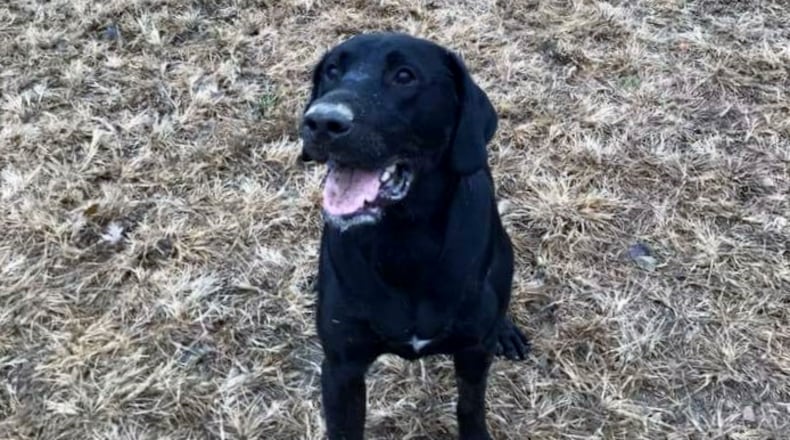Why? Same brand of peanut butter, same time, same place. I don’t have a clue.
Similarly, I’m still trying to understand why the black Lab is only interested in eating his dinner when Pip, our 3-year-old cat and his chief nemesis, causally saunters by the bowl and takes a couple of sniffs of the kibble/shredded cheddar cheese mixture.
Whether it’s 15 minutes or an hour, Teddy won’t touch the food until Pip sniffs it. Why? I’ve concluded Teddy is using Pip to check the food for hidden pills or different-flavored cheeses. Teddy’s a cheddar man.
Just minutes ago, Teddy was stretched out on his back snoozing, paws straight up in the middle of the study. An earthquake couldn’t wake him. Then, as I was sitting at my desk paying bills, without a single warning bark, growl or howl, not even a wake-up stretch, he sprang up and zoomed around the study, then the rest of the house.
I could go on and I’m sure you could give me a million examples involving your dogs.
But that doesn’t solve the mystery.
So we dig further.
I know Teddy’s brain is similar to mine. As Petsworld.in/blog describes it, “MRI studies not only point out structural similarities but also the fact that in human and canine brains the same sections light up when reacting to things/events/stimuli. Scientists have also found out that certain skill sets come together in dogs the same way it is with humans.”
Many researchers, including Dr. Jill Sackman, Ph.D., a clinician in behavioral medicine for Michigan hospitals, believe a dog’s cognition level is akin to that of a 3-to-5-year-old child.
Sackman notes that “a dog that is fast and accurate in one task will be agile and accurate at another chore as well. In a human brain, too, some cognitive skills are bunched together. If a person is found to be good at mathematics, he/she in all probability will be good at problem solving as well.”
Teddy knows exactly how many cubes of cheese he’ll receive — three — when Ed, my husband, and I come home from work or other various events and the pooch hasn’t destroyed the house.
He keeps his head down as I place the cubes one by one on the floor. As I place the last piece he scoops it up and walks away knowing that’s all he is getting.
The pooch can also solve puzzles such as the cupcake tin game. Treats are placed in various wells in a cupcake tin and tennis balls are placed over the wells. Teddy must remove the tennis balls to get to the treats. He mastered the puzzle after three tries.
So researchers would say Teddy is smart. But I already knew that. I want to understand why Teddy acts or reacts the way he does. But it might not be possible. Dr. Rachel Barrack of Animal Acupuncture in New York, speaking to petmd.com, said, “Just as it’s impossible to read another person’s thoughts, it is impossible to speculate exactly what a dog is thinking.”
As I read that, I swear Teddy winked at me then laughed as he started to eat his dinner with Pip watching from the kitchen table.
MORE INFO
Online: To learn more about a dog’s brain, check out: cuteness.com/article/anatomy/dog-brain.
Karin Spicer of Greene County is a member of The Dog Writers Association of America. She lives in with her family and two furry pets who inspire her. She can be reached by email at Spicerkarin@gmail.com.
About the Author
